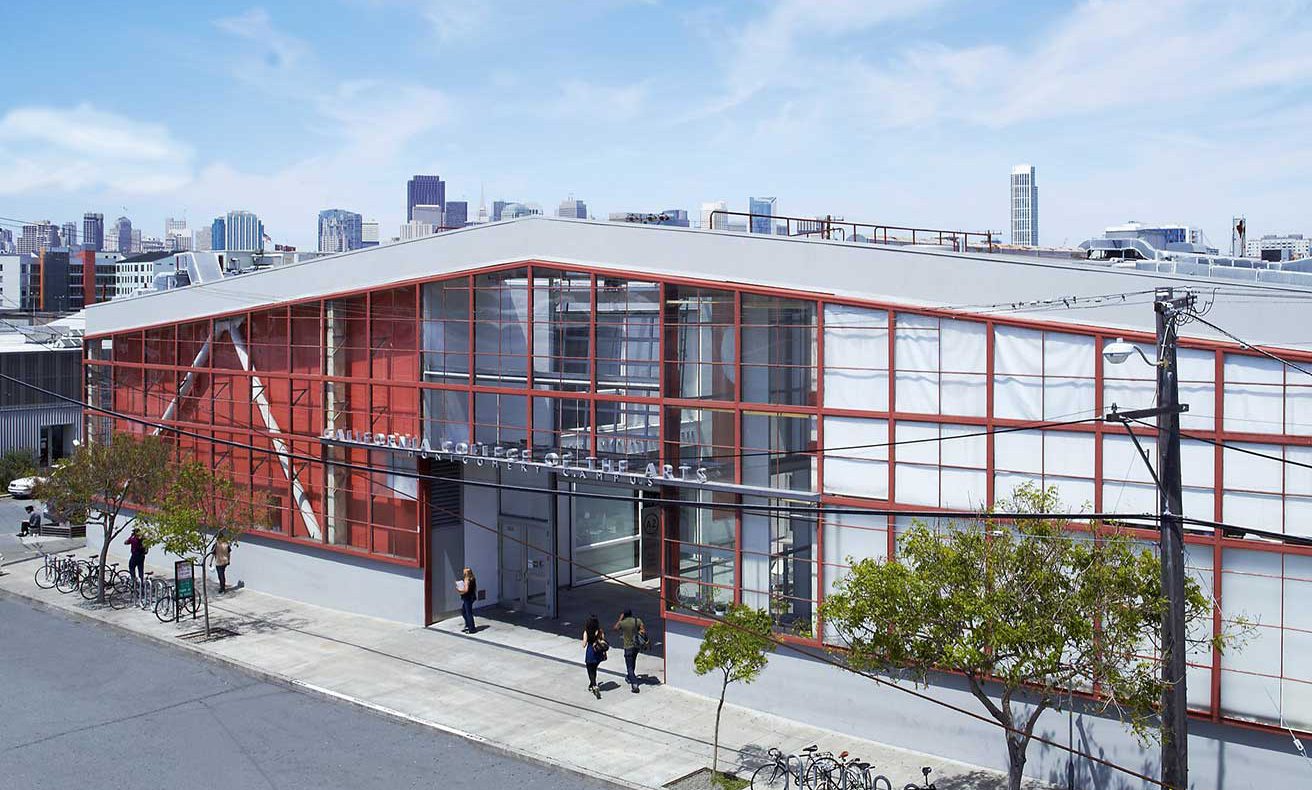California College of the Arts (CCA) is a renowned art and design college whose faculty and alumni have been at the forefront of every art movement of the last century. One of its programs is The Center for Art and Public Life (CAPL), which operates at the intersection of art, education and community. CAPL “believes engaging communities is the foundation of a practice focused on changing the world [and] a future in which creative practitioners collaborate with a diversity of communities to manifest equitable and sustainable change.” CAPL enriches education and artistic practice at CCA by facilitating mutually beneficial partnerships and collaborations to address the needs of local, regional, and international communities. Their core initiatives include:
- ENGAGE: a curriculum-based, semester-long, community engagement program
- CCA CONNECTS: year-long paid externships at art, design, and architecture firms
- IMPACT Social Entrepreneurship Awards: granting interdisciplinary student teams up to $10,000 to develop and actualize a socially innovative project
Center for Cultural Innovation (CCI) selected CCA as a CIIN grantee and partner because of CAPL’s work with artist social entrepreneurs and the college’s interest in experimenting with developing new types of donors who invest based on principles, not just profit. Like so many art and design colleges, CCA’s income is primarily composed of those who gift altruistically or who contract for students’ designs. CCI is funding CCA’s experimentation to attract—for the first time—impact investors who value the merits of supporting art and design projects that have tangible social, environmental, civic, or community benefits. As conceived, CCI’s funding will be used to both support staff’s learning and networking activities, as well as to act as a match for an impact investment. The larger implications of CAPL’s efforts, if fruitful, is the ability to demonstrate the usefulness of including art and design in impact investors’ portfolios, as well as providing art and design schools with a new fundraising strategy to help diversify their fragile business models. Although this project does not look like a typical “creative economy” project, the opportunity to influence new capital (i.e., impact investments) fit squarely within CCI’s interpretation of bolstering creative economy.
CCA is a good testing ground for this sort of experiment. As Karen Weber, Sr. Director of Institutional Giving, explained: “Making art that matters has been part of the ethos of the College from the very beginning. Don’t just work in your studio in a vacuum. Make a contribution, whether it’s contributing beauty or a deeper way of weaving into the community.” Because of this belief that art should have a social impact, CCA was a good partner in experimenting with attracting impact investments because they can already demonstrate student and alumni projects that are having measurable social impacts. As CCI’s President and CEO Angie Kim explained: “Can impact investors experiment with perceiving an educational institution like CCA as a portfolio of social impacts?”
The CAPL team realized early on that they needed to quickly build their knowledge about the world of impact investing. To that end, they spent the first year attending convenings, setting meetings, and compiling an Impact Investing & the Arts “research bibliography” to inform what CCA’s value proposition could be in this emerging marketplace. As Weber described, “This year was about information-gathering and networking; the coming year will be more about prototyping and bringing in more partners from both within CCA and outside of the college—even outside of art and design. We have a number of ways we could take this and we’re excited to stake our claim in a particular angle and push forward. Is it a professional association for social practice? Is it defining and developing metrics for social impact? What’s doable and where do we really want to live in the ecosystem?” The ultimate goal is that CCA would attract an impact investment, although CCI has expressed that their process for trying to achieve this outcome is also equally relevant.
